My mother, she slew me,
My father, he ate me,
My sister, Marlene,
Gathered my bones,
Tied them in silk,
For the juniper tree.
Tweet, tweet, what a fine bird am I!
– The Brothers Grimm, The Juniper Tree
There is no true way to measure the time Enrique Martínez Celaya spent studying and working tirelessly on The Sigh. How many hours passed while the artist sat in front of the canvas alone ins his studio patiently waiting and listening for the painting to speak to him? How often did the composition appear to him in dreams? The hours, days and years that passed cannot be quantified in exacting scientific terms. Since Celaya started in the Summer of 2012 and concluded in March 2015, The Sigh transformed from a raw piece of canvas, to a breathing entity embedded with contemplation, mediation and devotion woven deep within the fibers from the very brushes that created it.
When we first featured your multidisciplinary installation at Frederic Snitzer Gallery, Burning as It Were a Lamp, we were introduced to a sculpture of a boy created of bronze. There were holes cut from his chest and he was standing in a pool of his own tears. The boy returns in Lone Star both through painting and sculptural works. Who is this boy and where did he come from?
I think the boy is complicated. One way you can think of the boy is in a very direct autobiographical way. Standing for a personal preoccupation of my own life and my own history and the fertility of that condition of coming of age. Whether you are a boy or a girl, there is that period of leaving childhood and moving forward. And that boy embodies not only those aspirations but in some ways a sense of that vanished childhood that somehow many of us long for. So the boy is probably that, but in many ways the boy is also a point of entry in which to discuss other things like the radiance of the world in this sort of luminosity and secrets. But there is another layer of that boy, which is what you encounter in that world. I spent a lot of time saying I would never talk about images but so many people have missed the mark on the images that I used that for the first time I think I should say something and that is what fire, transparency, reflection, water and so on have on common is sort of a theatrical quality. They are and they are not, they are an embodiment of or representation of that which you can grasp and not grasp and when you see something transparent the way light bends to it there is an ordinary magic through that encounter.
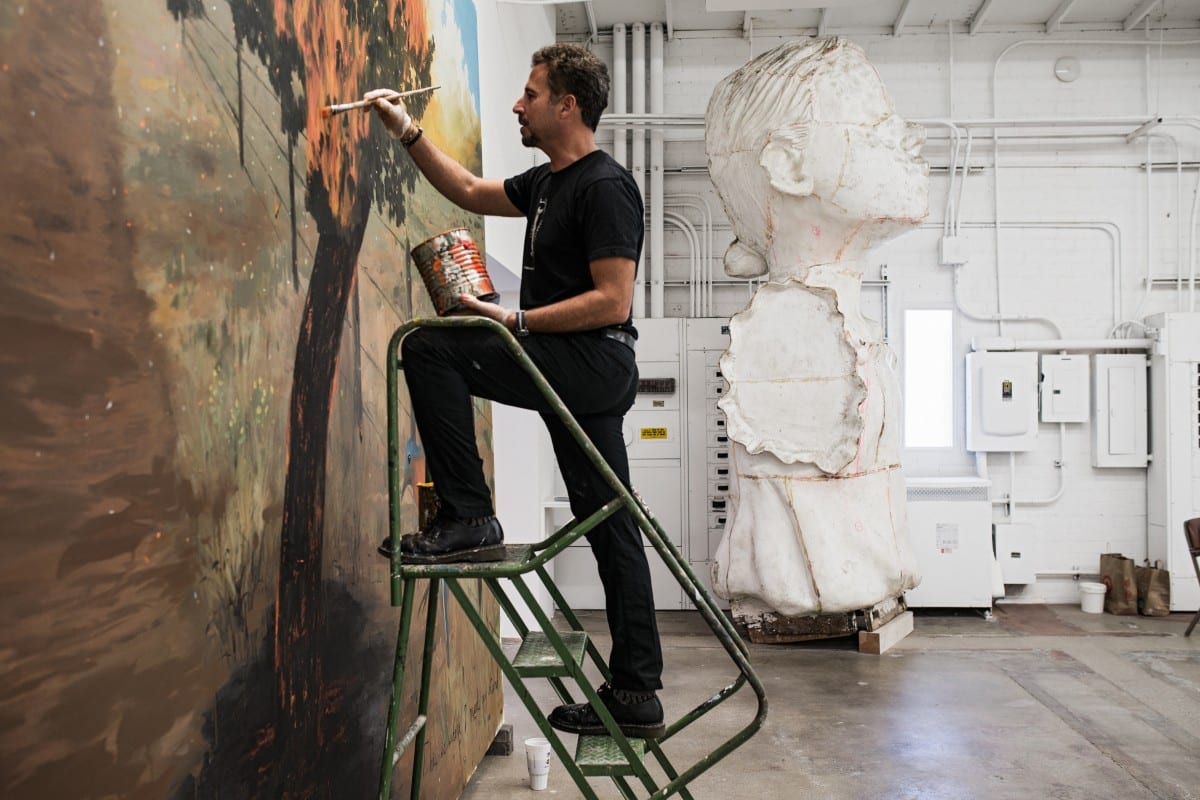
Your studio has documented the evolution of The Sigh from Summer 2012 to March 2015. The boy appears in several iterations and then ultimately disappears. Even though he is no longer visibly represented in the painting, the weight of his being is still deeply felt and evidence of his existence echoes in the text that appears on the bottom right corner stating “this is where I stand.” How did you know that the boy needed to removed from the final version of the painting?

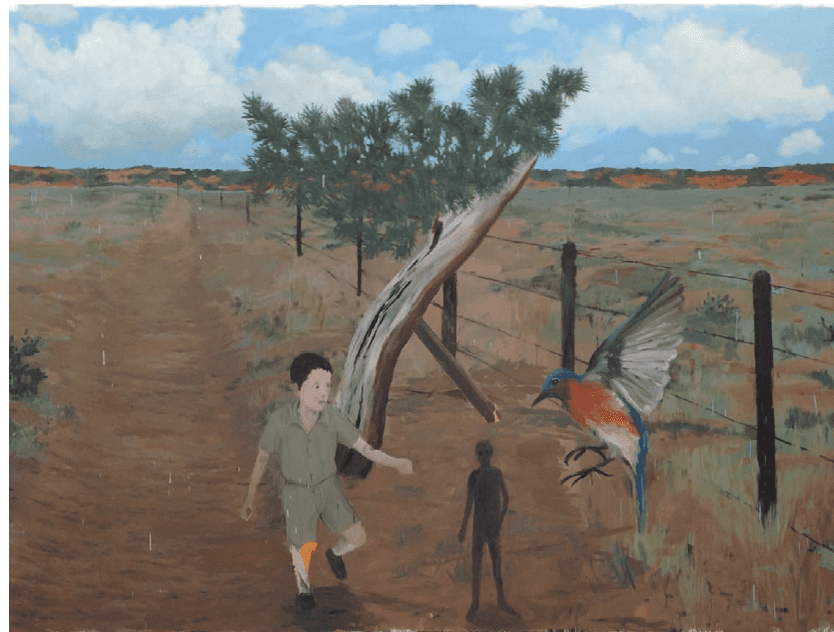
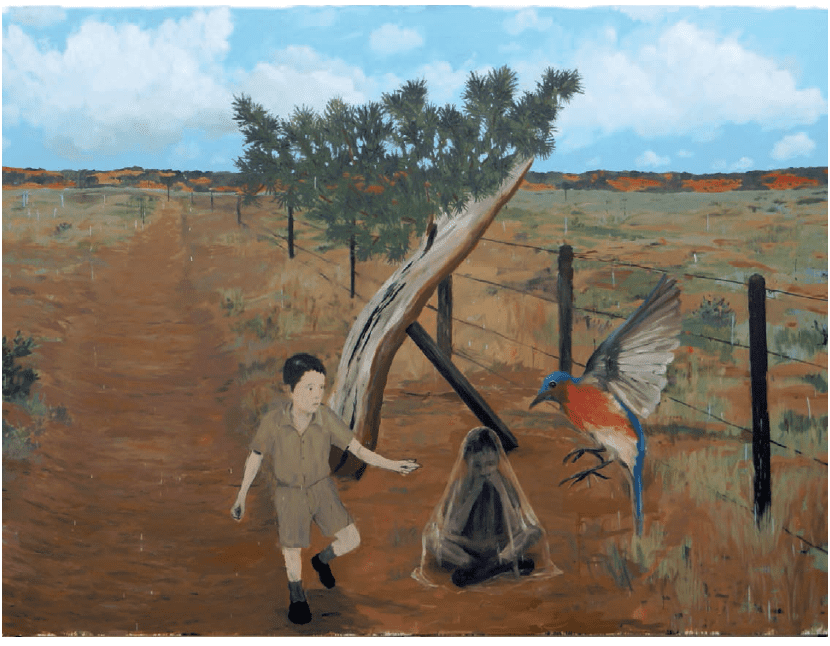
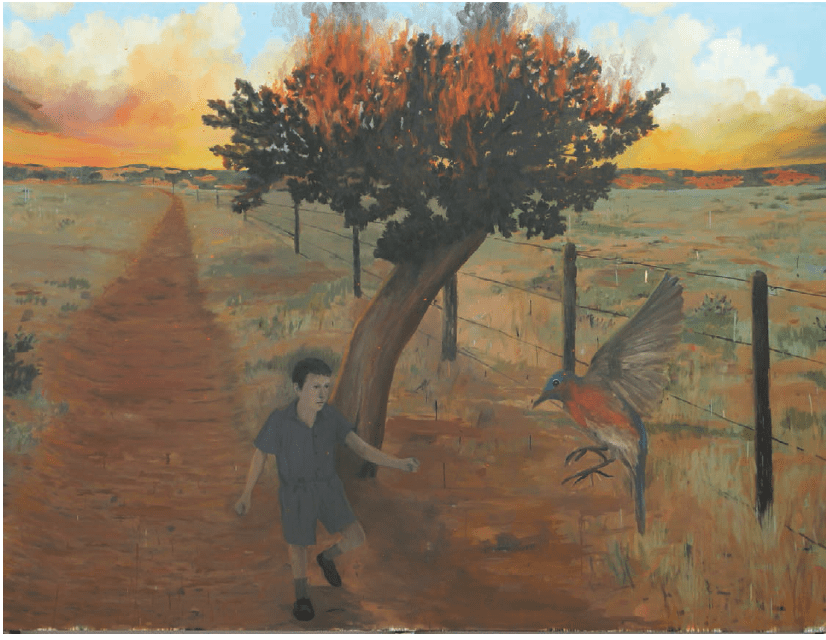
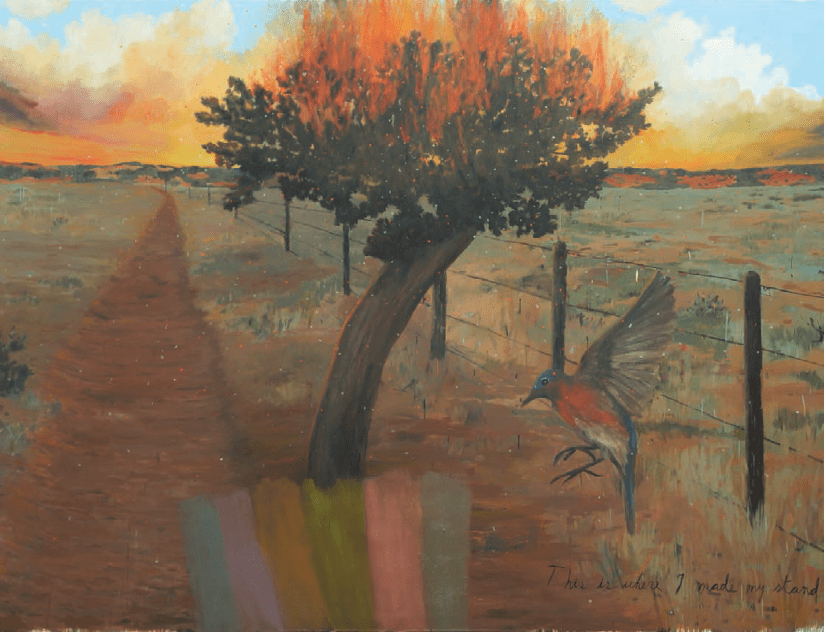
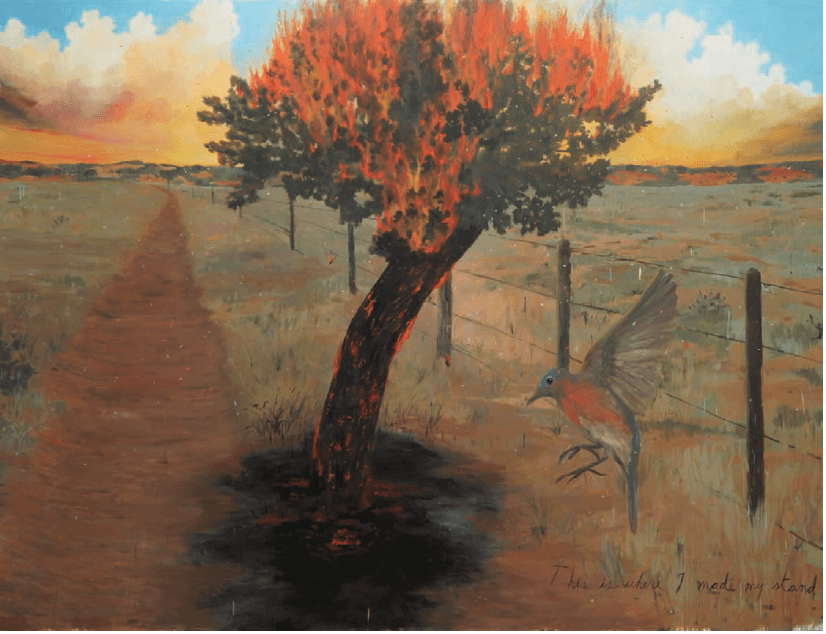
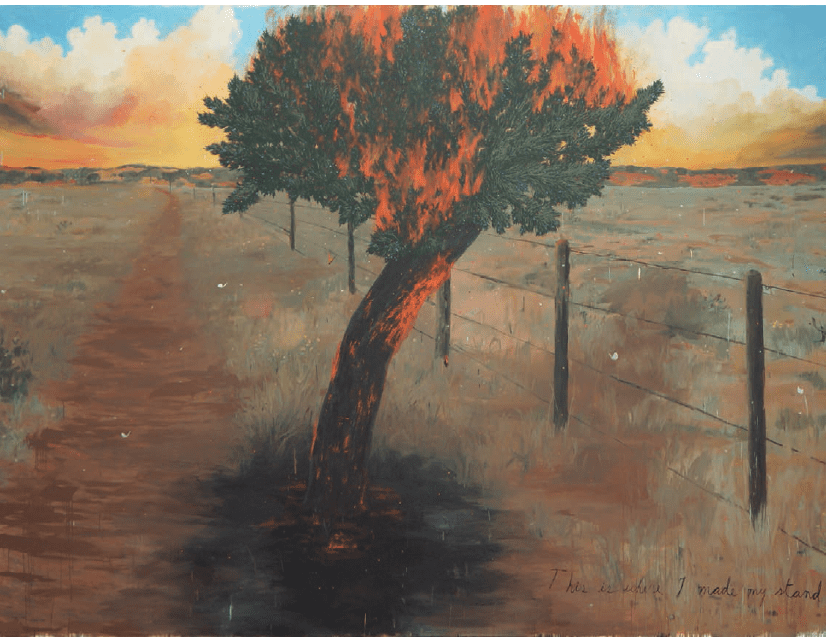
Sometimes only when something is absent is that there are really present. Before their absence, they are just like a fixture in our space in our world and when they are absent that hole that they leave behind, that space is what makes their former presence radiant in some luminous matter and you are aware of that.
The Sigh was inspired by the narrative of the Brothers Grimm fairy tale titled The Juniper Tree, which you site in your journal entry dated February 20. After a boy is murdered by his mother and eaten by his father, his ashes rise like a Phoenix. How did the narrative of the fairytale inform the development of The Sigh?
I am interested in the construction of fairytales, the replacement of fantasy onto reality creating a more crystalline world where things are more apparent than they are in the real world where we have a confusion of day-to-day living, so I do see all these images here you can see it as a letter to the past not so much to an individual in the past but to time itself. To the rooms that have been abandoned and we walk through them as ghosts now but where once we bumped against the furniture and we once were real there.
Do you think that in many ways your text acts in the same manner as luminosity, reflection, fire? Words can create palpable energy whether or not we were aware of his presence, he is still deeply felt. By removing the boy did his absence create an even greater charge in the painting?
I think that is very true. I haven’t thought about it in that way but I think that is true, I think that is what the text is doing. The text rotates the painting in some manner and also even though we have been accustomed to seeing text in paintings it is known as a problematic condition. I am already creating scenes that are dismantled by drips and edges and the ways that are painted that tell you, none of what you are seeing is true but the text adds another layer of conviction and discrediting all at once.
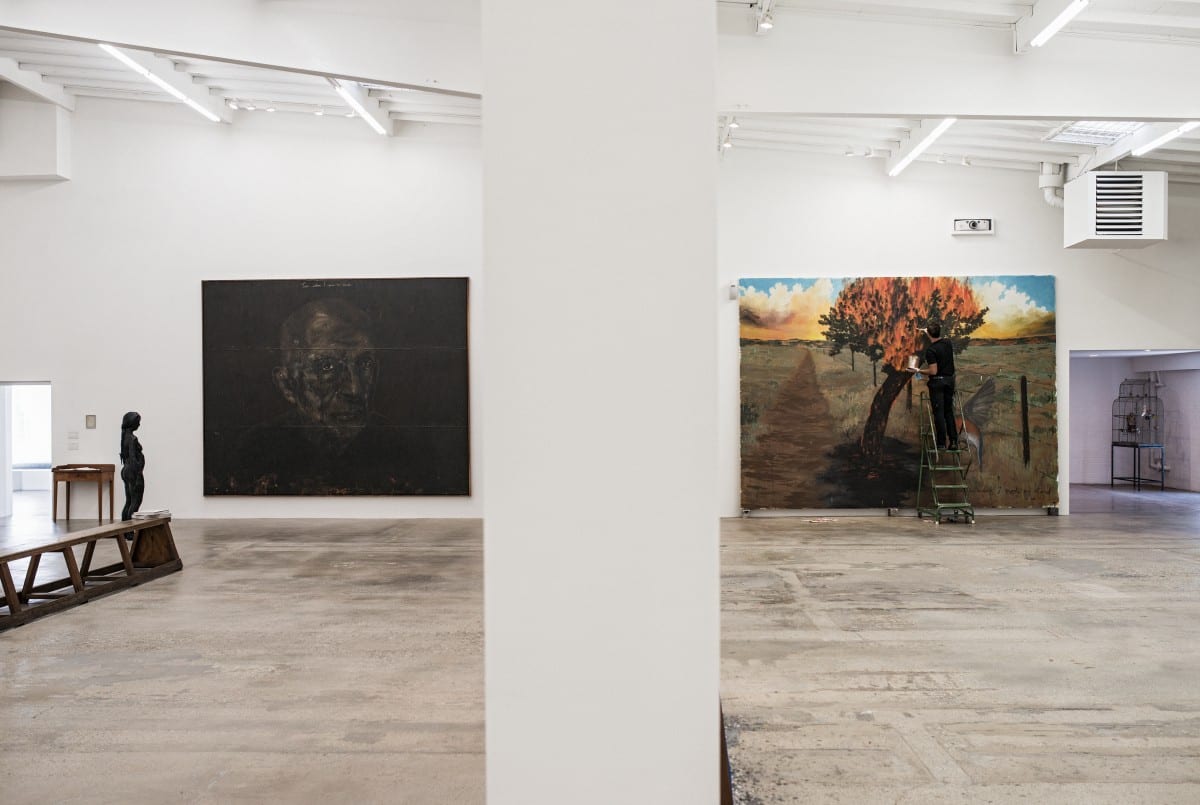
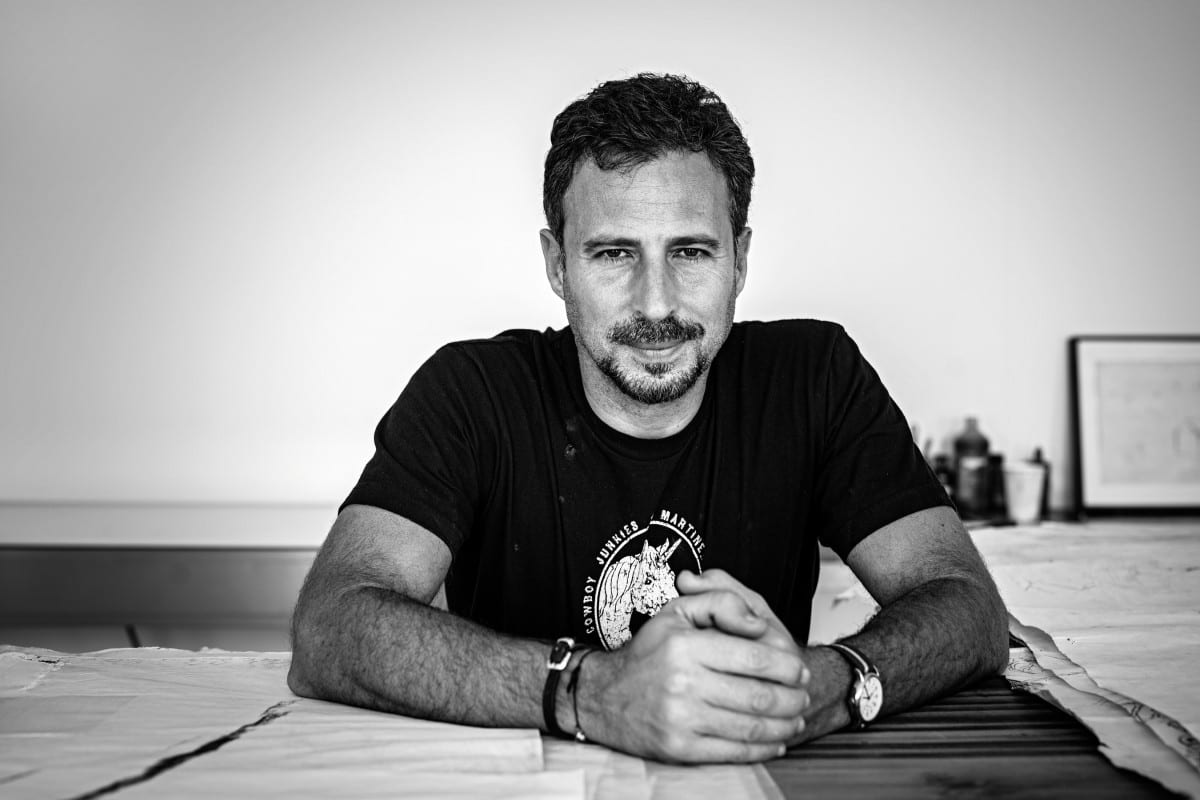
Evolution of the painting images © Studio Enrique Martínez Celaya
Portraits of the artist in the studio photographed by Rainer Hosch © Installation Magazine
